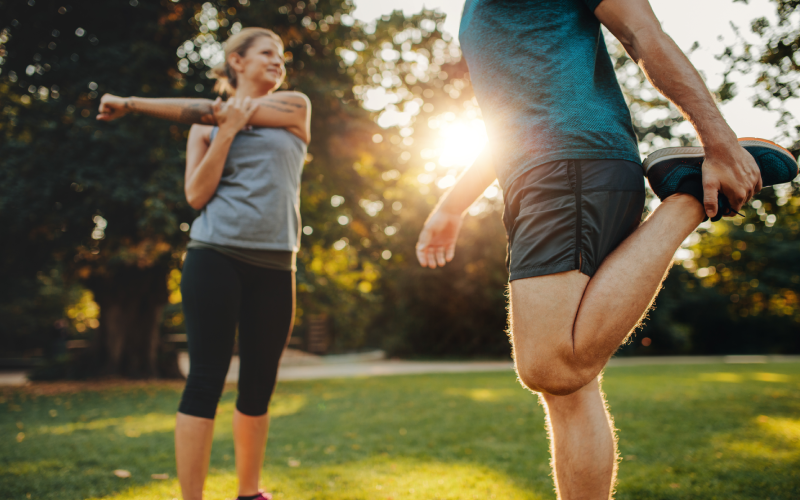What is a warm up?
A warm up is intended to raise body temperature and prepare a player physiologically and psychologically to compete. Research has suggested that the optimum duration of the warm up period, before flexibility or functional activities are undertaken, is between 15 and 20 minutes. The warm up should gradually increase in intensity until the player is working at 70% of maximal heart rate. A warm up at this intensity has the effect of allowing an increase in the range of movement of the joints and improving aerobic performance.
What are the effects of a warm up?
A warm up produces a 2 to 3 degree rise in body temperature that can last for 45 minutes. The rise in body temperature allows muscles and tendons to become more extensible . This makes stretching muscles and tendons easier and more effective. Research has suggested that this decreases the incidence of muscle strains.
- There is an increase in blood flow, which means that there is an increase in oxygen to muscle tissue.
- There is an increase in the temperature of the blood, which changes the partial pressure of blood gases. This means that more oxygen leaves the blood and enters muscle tissue.
- The increase in temperature causes a rise in enzyme and metabolic activity. This improves the efficiency of muscle contraction.
- The functional activities used in the warm up such as sprinting or kicking the ball cause an activation of neural pathways, which speeds up reaction time during a match.
- In addition to the physiological effects, the warm up has the effect of preparing the player psychologically by encouraging them to focus on the physical activity to follow.
What do warm ups usually consist of?
The warm up should begin approximately 30 minutes before a match:
1. The warm up should begin with 10 minutes of running to increase core and muscle temperature. This should start with easy jogging and build up to 3/4 pace running so that the heart rate is raised to 160bpm (as measured by a heart rate monitor). The players should have a light sweat on at this stage. (10 minutes)
2. Once the body temperature has been raised, active stretches and depending on the activity sometimes static stretches should be performed. These should not be painful at all. (5 minutes)
3. The player should actively mimic activities that he may have to carry out in a game – i.e. without a ball, he should go through the actions of side foot passing, high kicking, jumping and heading, squatting and jumping, etc (5 minutes)
4. Once warmed up and flexible, the players should introduce a football/ netball etc and go through functional activities. These include heading, short and long passing with both feet, running backwards, sideways, skipping, stopping/starting, sprinting, and sprinting and turning. (10 minutes)
The exact warm up programme is dependant on the sport that you compete in.



